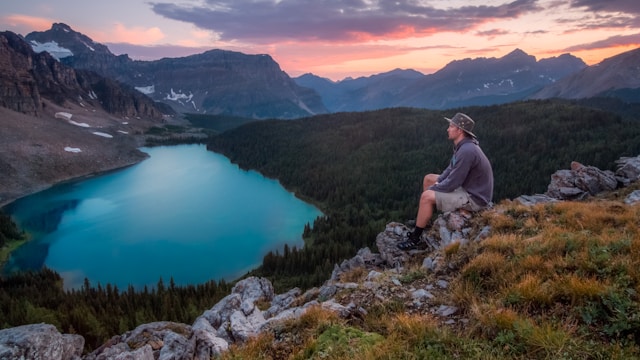Hiking is an active type of recreation that involves a prolonged movement over an area on foot or using other means of transportation, such as bicycles or canoes. This type of vacation provides a unique opportunity to immerse yourself in nature, test your physical and psychological limits, and build team spirit among participants.
How a hike differs from a walk
The main difference between a hike and a simple walk lies in its duration, the difficulty of the route, and the level of preparation required. While a walk is typically limited to a few hours or at most one day and does not demand significant effort or special equipment, a hike necessitates specialized gear, a meticulously planned route, and can extend over several days or even weeks. Participants on a hike face a range of natural and climatic conditions, challenging their physical fitness and adaptability. For those interested in other challenges that test their strategic thinking, platforms like Betting.BC.Game offer a variety of betting games that can be equally engaging and require careful planning and risk management. On a hike, just as in strategic games, the ability to adapt to changing environments and conditions plays a critical role in the overall experience and success.
Types of trekking
There are several basic types of hiking, each with its own characteristics and requirements for participants and equipment:
- Hiking is the most common type of hiking, which involves traveling through different terrains exclusively on foot. These hikes can include easy trails on the plains and more difficult trails on mountains or rugged terrain.
- Bicycle trekking – involves the use of a bicycle, which allows you to cover longer distances and explore wider areas. Requires specific equipment to repair and maintain the bicycle on the road.
- Water hikes – are conducted in canoes, kayaks, or other watercraft. This type of camping is ideal for exploring rivers, lakes and coastal areas.
- Horse trekking – used to travel on horseback, which adds the specialty of managing and caring for the animals en route.
- Mountain trekking – involves climbing mountain peaks, which requires specialized mountaineering equipment and high physical fitness.
What you need to know about hiking
Before you go camping, it is important to carefully plan your route and prepare the necessary equipment. Depending on the type and difficulty of the hike, the list of essentials may include sturdy shoes, comfortable clothing, a tent, sleeping bag, backpack, and navigation aids like a compass or GPS tracker. Don’t forget first aid and enough water and food as well.
The physical fitness of the participants should also be considered. Starting with shorter routes is recommended for those who are inexperienced with long hikes. Be sure to familiarize yourself with the weather conditions in the region of the intended route to avoid unexpected situations due to bad weather.
How to prepare for a hike
Effective preparation for a hike begins with developing a clear understanding of the route and the conditions in which it will take place. The first step is to choose a suitable location, taking into account your experience and the physical abilities of all participants. Use trusted maps and GPS apps to plan the route, paying attention to rest areas, water sources, and potential hazards.
The next step is to gather the necessary gear. The list of mandatory items includes: quality hiking shoes, durable and waterproof clothing, a backpack of appropriate size, sleeping bag, tent, mat, cooking facilities, and navigational aids. Special attention should be paid to first aid – a first aid kit should contain not only the standard set of medicines, but also insect bites, sunscreen and allergy remedies.
Don’t forget about logistical and physical preparation: pack your backpack so that heavy items are closer to your back and the most used items are accessible without having to unload the entire backpack. It’s also worth doing a few practice outings with a full load before the hike to get used to the weight and check that you have everything packed correctly.
Conclusion
Hiking can have significant benefits for both physical and psychological health. Not only do they help build health and stamina, but they also help improve your mood and overall well-being by being outdoors and in a natural setting. Hikes also foster bonding among participants and team spirit. It is important to remember the safety and always prepare to the possible risk to your adventure remains only pleasant impression.
